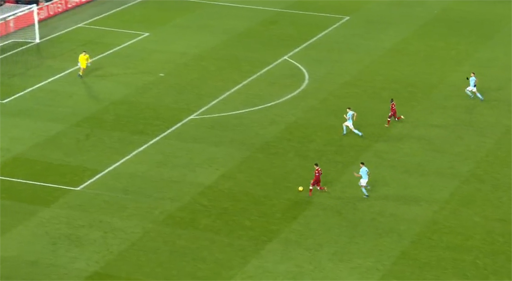WORLD CLASS COACHING
Win With Defensive Pressure
By Luca Bertolini
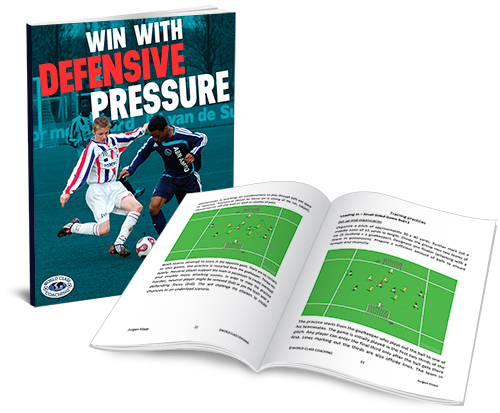
Table of Contents
PART THREE
MULTIPLE 1V1 ON THE STRONG SIDE
Two teams of four players are placed inside a three areas field; two players from each team in the middle and one from each team on both flanks. One neutral player is placed in the middle between the lines. One goalkeeper is in possession.
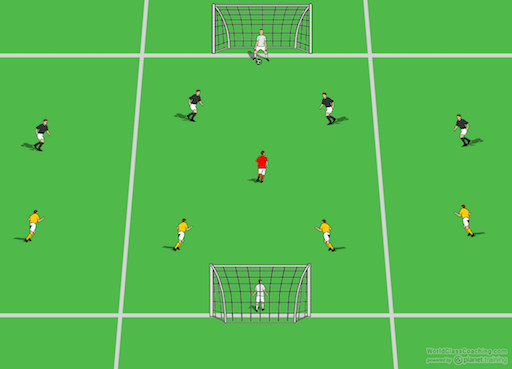
The goalkeeper of the back team is in possession and he passes the ball toward the neutral player who must send the ball wide on the flanks to create a strong side and a weak side.
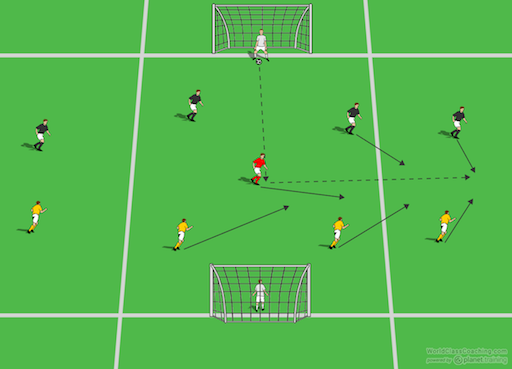
A 3 v 3 duel is now created along the flank, with multiple 1 v 1 duels. 3 defenders (the fullback and the center backs) must mark the opponents and the neutral player, to recover the possession as soon as possible.
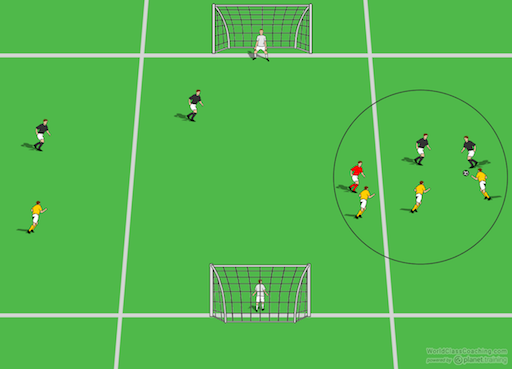
The goal for the defender is to recover the possession on the strong side and then to switch the direction of play toward the weak side where a teammate must finish playing outnumbered 1 v 2.
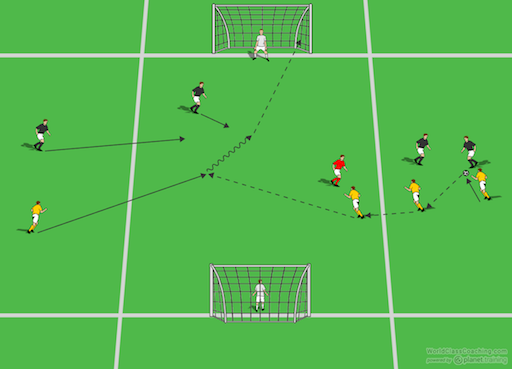
If the forward team is able to keep the possession, the defenders must create a strong area, trying to pressure 1 v 1 against the opposition even if they are outnumbered 4 v 5.
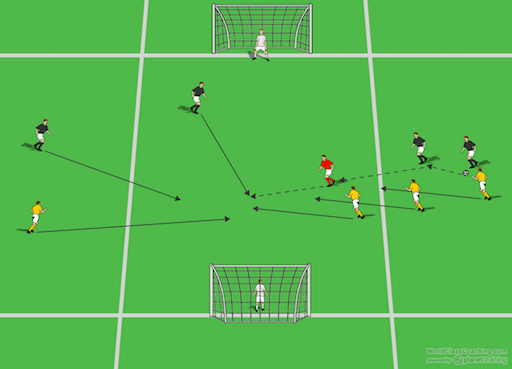
Coaching Points:
• Pressure timing to create the duel with equal number of player on the strong side
• Recover the possession as quickly as possible
• Quick finishing in the weak side of the opposition
• Create defensive density in the center
Close the passing lanes.
First of all, let's underline the difference between the passing lanes and the passing channels. The passing lanes can be considered as “gaps between opponents.”
It is a space available for a ball to be passed through as it's wide enough so that no defender can run to cover it or can extend the leg to cut off the pass. The distance between the player in possession and the teammate who is waiting for the ball must be short enough and the pass hard enough that defenders don’t have time to react and to close the space.
The goal for the team in possession is to play a ball into space and behind a defense line for another teammate who is placed forward on the field, to open space and maintain forward progression.
A passing lane is missed when the gap where the second teammate could be ready to run in and behind the defenders is not recognized by the player with the ball; or on the other side, when this gap is being covered by a third player of the defending team at the back of the two who are placed on the gap's line.
In this following picture it's very clear as all the passing lanes are covered because a third player is closing all the gaps among the defending teammates; if the player in possession passes short, the receiver will be under strong pressure, if he passes longer, the third back player could easily intercept the ball.
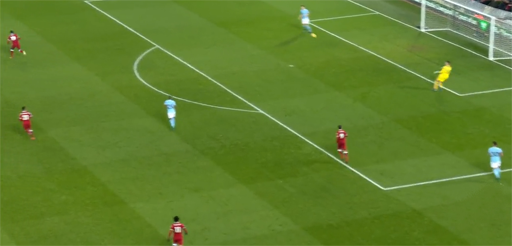
A passing channel can be referred to as the space between the most outside defending player near the ball and the sideline. From a technical point of view, the difference between the passing lane the passing channel is that the sideline of the field is a passive defender as it closes the space to play in.
A pass in the channel should follow the direction of run of the potential receiver and generate a cross pass into the penalty box to finish the attacking phase. A pass on the ground is easier to control for the receiving player, but there must be enough space to play the ball through, and it's quite easy to be closed by the defending player.
It is easy to see how channel and lane can be used interchangeably. From a defense point of view, if the goal is not to recover the ball as soon as possible, the best way to avoid the building up from the back and the play out phases of the opposition seems to be to close the space for a pass between the opponents, and direct the possession phase toward the space the most outside player and the sideline.
In order to leave a man free at the back themselves, the man-marking team will ask the strikers to press both of the opposition center backs. Depending on which player has the ball, the striker has to shift laterally to defend that player. If the center back is able to dribble forward with the ball under the pressure of the defending attacker and he is able to invite the pressure of a midfielder, he may create serious issues for the defensive structure of the opposition.
This is the reason why closing the passing lanes directing the possession of the opposition along the outside passing channels may be a better solution if 1 v 1 pressure tactics can't be played with the right timing. Similar tactics may be made when the opposition team is able to build up from the back systematically.
In this following picture, the center striker closes a potential forward passing lane for the goalkeeper and he directs the build up phase outside. Two teammates are ready to put pressure on the center backs.
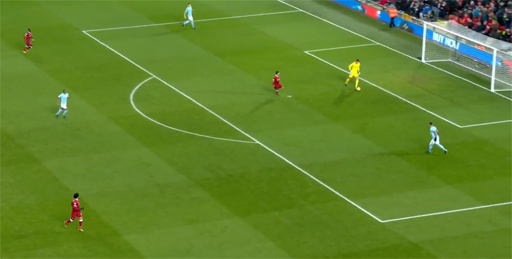
As the ball is played outside between the opposition center back and the fullback, all the passing lanes toward the center are closed and the play out phase is directed toward the flank.
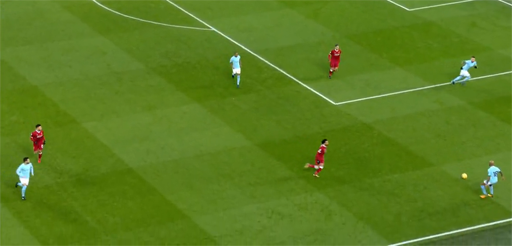
We see a clear 1 v 1 pressure keeping the opponent turned toward the sideline, which is, as we saw before, another semi-active defender, as it limits the space of action for the player in possession.
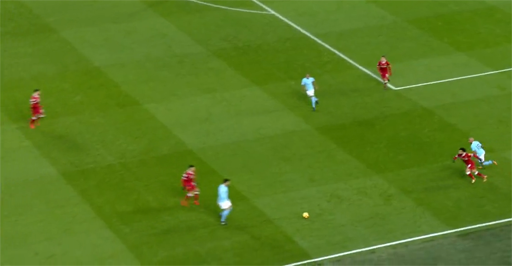
Even when the opposition is able to play passing combinations to free a forward teammate, it's now easier to close him outwards and to avoid developments of the attacking move toward the center space of the first third.
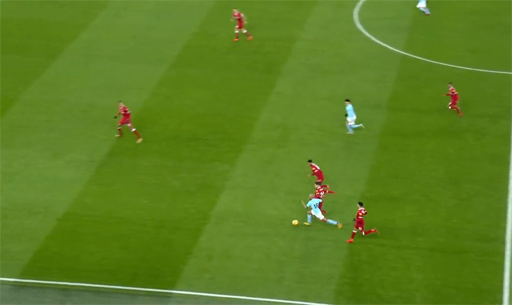
In this following picture it's clear how the attackers of the defending team are closing the vertical passing options of the opposition goalkeeper, and he has to kick the ball away to avoid the pressure.
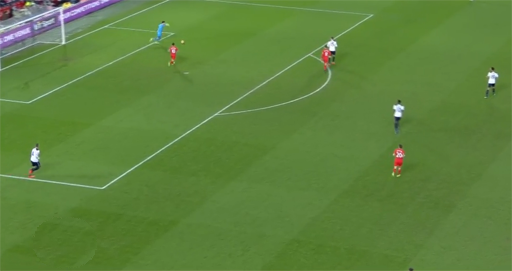
In this footage two attackers are closing the passing lane toward the center play of the possession team and they could press the outer opponents too if they received the ball.
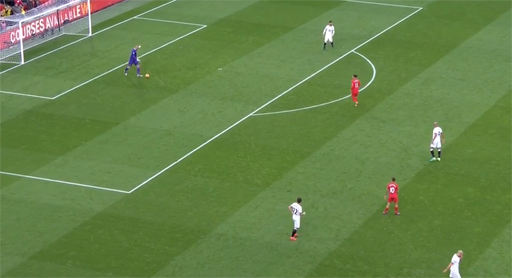
In this other situation, a first attacker is pressing on the opponent in possession, and the second one is closing the forward passing option toward the center midfielder. The only chances available are a back pass or a risky horizontal pass. If the player in possession tried to dribble out, he would be under strong pressure of the nearest opponent.
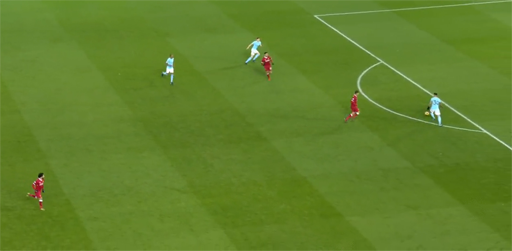
As we saw before, passing channels are easier to cover than the passing lanes, and for this reason pressing runs force the opponent towards the flanks. But the fullbacks, or the outer defending players in general, need to adapt the position that has to be related to the pressure direction.
The wide compactness and the right lateral distance among the defending players are useful to close the more dangerous passing lanes. Also, the horizontal compactness requires the team to shift towards the ball to create a numerical advantage or to equalize the number of players near the ball to close the passing lanes.
6 v 5 duels inside the opposition half,
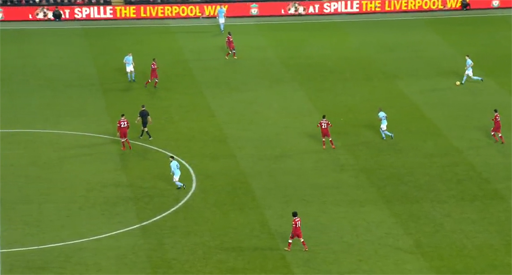
and 3 v 3 near the ball.
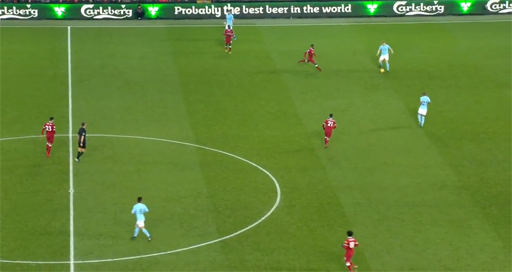
3 v 3 on the ball to direct the opposition phase of play backward and 3 other player who are ready to close the passing lanes. This happens thanks to wide compactness on the left and the weak area that is covered with three other players.
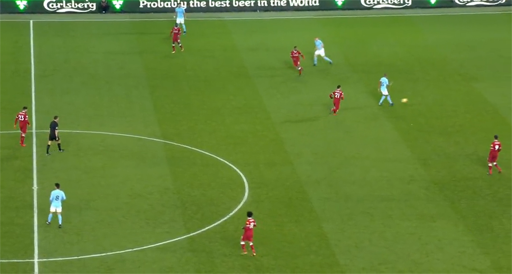
In this following match situation, we see a 4 v 3. The only solution seems to be a backward pass, as two players would be under pressure as they receive the ball and the horizontal pass is covered.
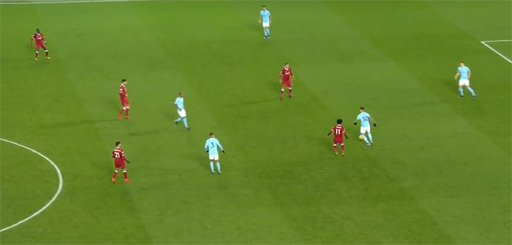
Wide compactness and numerical advantage are recognizable.
Another principle of play, thinking about compactness, is the density of players near the ball, creating a strong side near the ball and covering the weak area too. In this footage a 4 v 2 near the ball can be noticed as well as two more players who are ready to cover the space in the middle and on the opposite flanks.
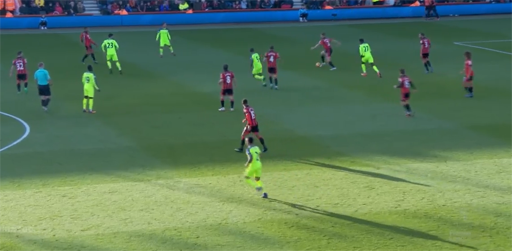
Here again, we see a 3 v 2 duel near the ball on the right and three other players ready to close down the spaces in the center and left.
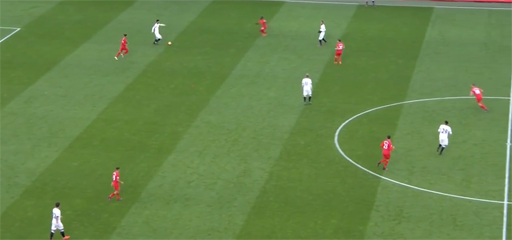
4 v 3 duel near the ball on the right and two other players ready to close down the spaces in the center and left.

Wide compactness and the passing lanes closure are not enough to recover the ball while playing and not only with a throw-in or a free kick. These are the defending individual moves that can bring the team to recover the possession:
• The interception of forced forward pass
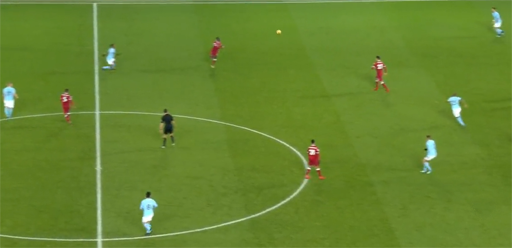
• Attack 1 v 1 on the opponent if he is facing his own goal
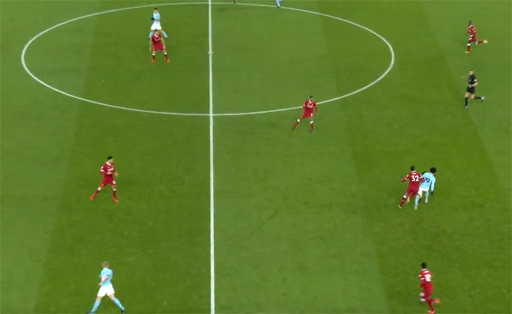
• Recover the space quickly if the ball control is hard for the receiver, moreover during the second time of the ball sequences
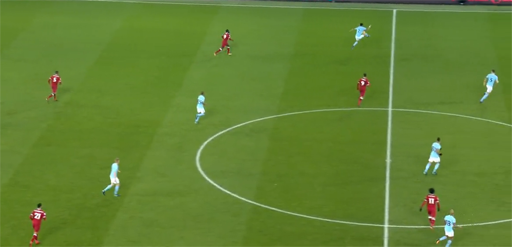
• Strong pressure on the opponent to win the possession
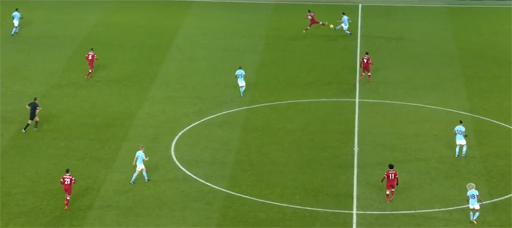
• Take advantage of the space behind the opponent’s lines
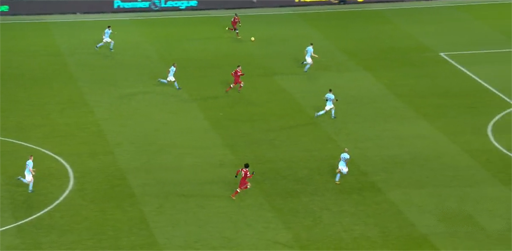
Here again the same principle of play inside the defensive half:
• Wide compactness behind the ball line with a 1-4-5-1 formation
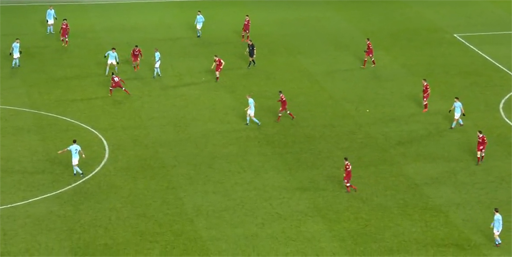
• Attack 1 v 1 on the ball control of the opponent and recover the possession after a potential technical mistake of the opposition
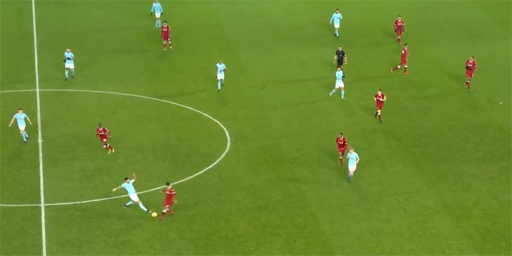
• Take advantage of the space behind the opponent’s lines
